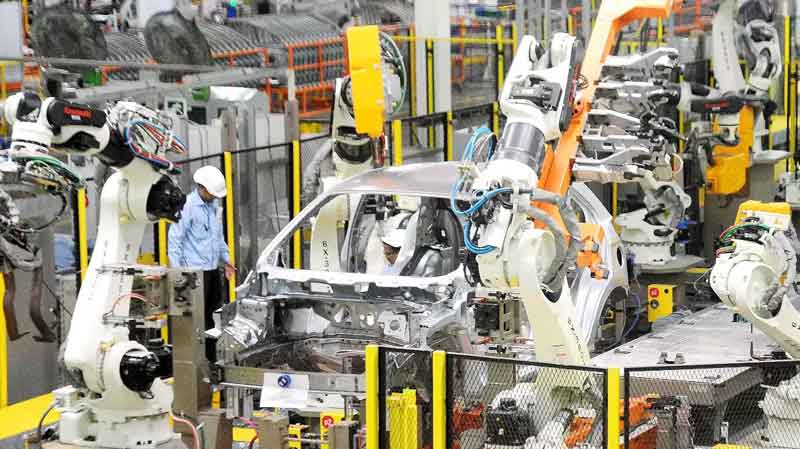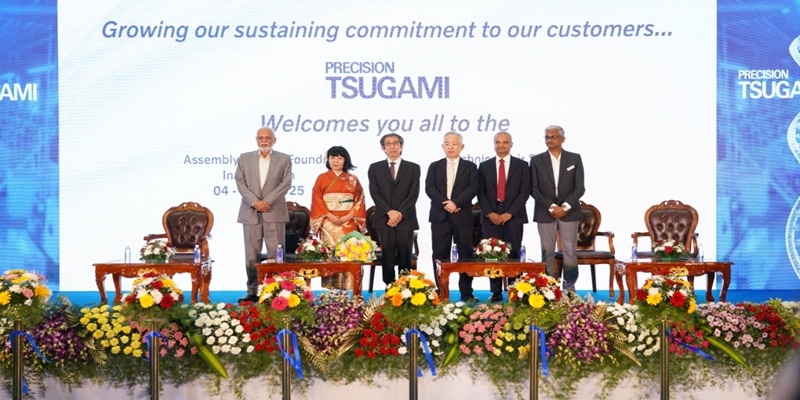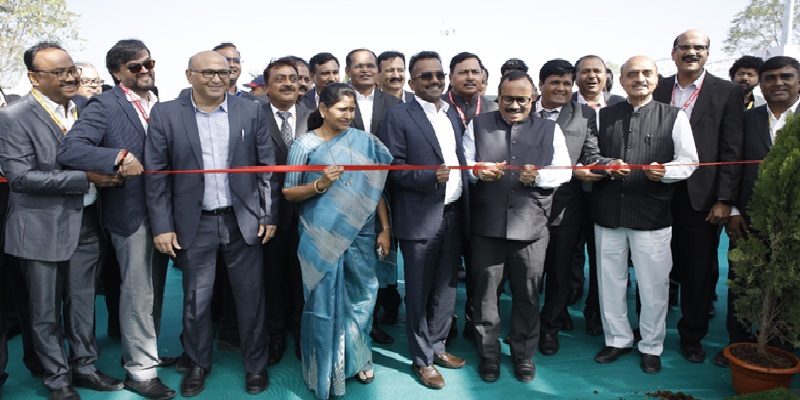Schedule a Call Back
Tips to make Indian manufacturing sector strong
 Articles
Articles- Feb 17,23

The manufacturing industry of India has the potential to reach $ 1 trillion by 2025 and India is expected to rank amongst the top three growth economies and manufacturing destinations of the world by the year 2025. Currently, India is the world’s ninth-largest manufacturing nation. GOI’s ambition is to raise manufacturing’s contribution to 25 per cent of GDP and to create 100 million jobs in the coming decade. Some of the favorable macro trends are the fastest growing economy with sustained GDP growth of 7 per cent plus, existence of infrastructure in Tier2/3 cities, government investment schemes like Make in India & smart cities, large English-speaking talent pool in software, engineering, IT and technical disciplines, many multinationals have made commitments to build plants and hire talent in India for local and global production.
Government of India (GoI) is also providing a supportive ecosystem through multiple policy initiatives such as the introduction of Goods and Service Tax, reduction in corporate tax, interventions to improve ease of doing business, FDI policy reforms, measures for reduction in compliance burden, adoption of public procurement orders, Phased Manufacturing Programme (PMP), Atmanirbhar Bharat package, indigenization of the defense sector, the introduction of Production Linked Incentives (PLI), development of the National Infrastructure Pipeline, National Monetization Pipeline, Industrial Corridor Development Programme in 4 phases. Furthermore, policies like Skill India, Digital India, Start-up India, and Accelerating Growth of New India’s Innovation (AGNII) provide further impetus to manufacturing in India. Key sectors which will fuel the manufacturing growth in India in coming years are automotive, defense, aerospace, pharmaceuticals, agriculture, bio-industry, bio-IT & MSME sector.
While macroeconomic trends are positive but technology gap between industry & engineering colleges or technical institutes must bridge through skill development by having industry/academia partnership. It is important for manufacturing industries to get involved early in product development process and adoption of new technology. Role of supply chain in developing warehouses, inventory management system & effective transportation mode through truck, rail, water, pipeline & air are very crucial. Vision to achieve growth in Indian manufacturing industries to generate bulk employment generation will require the following themes to be implemented in a constructive & planned manner:
Introduction
The Indian manufacturing industry is going through a challenging phase. On one side global partners expect India to take a lead in manufacturing and within India there is a growing need to create manufacturing hubs. Over the last decade or more, the service industry has grown tremendously, which has given the Indian service sector a push and improved the income and life expectancy of service sector resources. The service industry is mature enough and while it continues to grow (in 2023 the service industry exports are expected to almost equal the export of goods), its contribution to generating the volume of employment, which is the need of the hour is not as much as the manufacturing industry.
Indian manufacturing industry can create bulk employment which can be the growth engine for India in the future. The Government is taking initiatives like production linked schemes, skill development & creating economic zones etc. However, these are macro level policies which will not have an effect unless micro level challenges in manufacturing industry are addressed in constructive ways.
Challenges & opportunities
Indian manufacturing industry has a challenge of skilled manpower who will be competitive and take on the challenge to adopt new technologies. Government & industry bodies like CII are making efforts to create skill development programs, but these schemes are not attracting the young resource pool like the IT industry. Genuine interest in manufacturing and the associated opportunities and career growth needs to be created in the minds of the young resource pool, including in the women workforce right from college days.
Utilisation of existing manufacturing units and the manufacturing ecosystem in India is not in line with the global standards. For example, most of the automotive prototype builds (early part of product development) happen in countries like China, S Korea, or Japan. Deliveries of these physical prototypes in 4-6 weeks is primarily because the supplier ecosystem in these countries is such the order is accepted by any one supplier and the others support the deliveries as one team without any administrative delays. Indian manufacturing industry can support OEMS only after the product is matured & with adequate support from global OEMs to adopt newer technologies & investment. Manufacturing industry in India will have get involved in early phases of the product development cycle, so that they will address the needs of the product during inception & digital realization phases.
Manufacturing industry in India still lacks technology adoption. Most of the manufacturing units still depend on manufacturing drawings for the physical realization of products whereas the global manufacturing industry is digitally equipped in terms of 3D data with requisite manufacturing information attached to 3D model which can be viewed & used digitally on the shopfloor to convert into product reality. The 3D CAD data which is created in product development cycle is cascaded to all downstream stakeholders in the manufacturing workstream. PLM systems of OEMs need to be extended to supplier ecosystems so that product realization cycle can be optimised. Blue collar workforce should be sufficiently trained to use these 3D models on workstations & tabs on the shop floor. Design team need to focus on creating rich-content 3D data for downstream agencies to use till the last stages of product realization like after sales & service. Overall manufacturing industry in India must undergo digitisation of entire steps in the product realization processes.
Most of the global automotive & aerospace units have made their investment in terms of creating a R& D setup in India to cater to their global requirements. Indian engineering service providers (ESPs) are supporting these global OEMS by providing services in manufacturing engineering at digital level which we call “digital manufacturing”. These ESPs are working on services like robotic programming, formability analysis, discrete event simulation, factory digitization, human or ergonomic simulation, tool design services like sheet metal, plastic molds, thermoforming molds, BIW jigs & fixture, analytics-based manufacturing, AI/ML based manufacturing for defect analysis, etc. Global OEMs get these advantages from Indian ESPs to increase & optimize their manufacturing base in their own countries and across the globe. The Indian ESPs can play an important part in enhancing the technology content in the Indian manufacturing ecosystem as they are well versed with global standard & new trends in manufacturing. This will help in shaping the Indian manufacturing industry and the ecosystem to deliver global products from India for global customers.
The machine tool industry is considered the mother of all manufacturing, where the skill sets of accuracy, precision & quality is maintained to create better quality of products through various manufacturing processes. There is a growing demand for automation across the manufacturing processes to enhance productivity & meet stringent quality standards. Indian machine tool industry needs to take advantage of these requirements to improve their presence in growing manufacturing hubs and to speed up adoption of technologies like 3D printing & AI/ML based machine tools. This will help in part production & inspection on same machine and an overall improvement of throughput. Technologies which can adopt incremental correction within the machines during production need introduction, so that series production has uniform quality.
While there are challenges in developing the manufacturing units in India there are also equally opportunities which exist in India and need to be leveraged. We still produce a large pool of young resources which need to be channelized through technical institutes and engineering colleges. India has large number of engineering colleges and technical institutes like IGTR, NTTF & many others which are specifically built for the tooling and manufacturing industry. Engineering colleges should have special focus on entrepreneurship for developing manufacturing units.
Female workforce in India is slowly moving to manufacturing industry however their focus is on softer areas like design, purchasing, sales, marketing etc. There are several examples in Indian OEMs (e.g. Tata Motors) where the female workforce has made a huge contribution to improve productivity & quality on shop floor & assembly lines. Few of the OEMS are going for an all-female workforce on assembly lines and they are getting benefits in terms of high productivity, better quality & improvement in plant utilization. The industry also needs to create female champions & leaders who can nurture the female work force to address these challenges. Frugal mindset in Indian resource can be utilized for a lean manufacturing setup across India.
Global OEMs are taking manufacturing engineering services from India & these service provider resources can be utilized effectively to develop manufacturing units. Manufacturing in India is still labour intensive and, therefore, automation for labour intensive activities is essential. Manufacturers now need to use sustainable engineering strategies to step further ahead to compete with other competitors or it may lead to decline in their brand reputation more than the harm it may cause to environment. Government should also create SEZ for manufacturing sectors which measures on the parameters on employment generation by manufacturing units & its supplier ecosystems for global products.
Conclusions
Although there are challenges and opportunities ahead of Indian manufacturing industry, there is a need for constructive focus on following themes so that India can achieve larger GDP in manufacturing pie in coming years. Increased collaboration between the manufacturing industry players, CII and other industry bodies, GoI and other state governments and academia will help facilitate this process.
Bridging technology gap between industry requirement & skill resource: Government should provide incentives to manufacturing industry to tie-up with technical institutes and the service industry. Manufacturing industry needs to do investments and plan for advance involvement in product development processes. Involvement of academia so that final year candidates from technical institutes or Engineering colleges should be working on the shop floor to gain the knowledge, so that they will be industry ready while they are absorbed in manufacturing industry. College students should be given special weightage in terms of compensation by manufacturing industry who can focus their career on manufacturing like the initiatives taken for IT in the nineties. Engineering colleges and technical colleges curriculum should have topics like advanced manufacturing catering to latest industry trends of ‘Smart Manufacturing’, Industry 4.0, IoT, AR and VR. In this regards some development is happening at government level in developing innovation centres across various states.
Role of Indian engineering service provider to shape the manufacturing industries: As Indian engineering service providers are working for global automotive & aerospace customers for two or more decades they are well equipped with various standards like design & quality through which they are delivering digital manufacturing solutions to these global OEMs. Government and CII to create blueprint for Indian manufacturing setups, with the help of NASSCOM, ESPs like Tata Technologies & others and superannuated senior experts from big automotive & aerospace industries.
Development of supplier & supply chain ecosystem: Special manufacturing eco system to be developed with the target of employment generation in mind, like it has been done in countries like Korea. Special status in terms of taxes benefits to be provided to this industry. More start-up companies should be encouraged for manufacturing setups rather than service setup. The warehouse is an integral part of logistics, a tool for competitive advantage. Warehouses are required to hold inventories to balance demand and supply. It acts as a buffer between uncertain supplies and manufacturing plans and cyclic market requirements in the outbound logistics. There is a trend to develop efficient warehousing to support integrated logistics needs. Older warehouses were mere godowns without proper material handling facilities leading to wastages, damages, obsolescence, and higher cost of operation, are steadily being replaced by newer automated warehouses with advanced, computer-controlled material handling system requiring few employees. This will bring about transformation in the logistics and warehousing industry. Inventory management will play a key role as it affects customer satisfaction. Firms need to maintain the delicate balance between carrying too little inventory and carrying too much. Many companies would greatly be able to reduce their inventories and related cost through just-in-time logistics systems. With technologies like RFID in place, companies would know at any time exactly where a product is located physically within the supply chain. The choice of transportation carriers affects the pricing of products, delivery performance & conditions of the goods when they arrive. In shipping goods to its warehouses, dealers & customers, the firm would be choosing among five main transportation modes like truck, rail, water, pipeline and air.
About the author:
Naren Brahme is the Vice President of ER&D and heads the Industrial Heavy Machinery (IHM) & Manufacturing Engineering unit at Tata Technologies. A dynamic & versatile technical professional, specialising in CAD/CAM & CAE, he possesses 30+ years of strong experience in handling and leading full vehicle development programs in construction equipment and material handling OEMs for major engineering design applications having worked with leading organisations.
Related Stories

Indian Machine Tools Industry Gains Amid Shifting Global Dynamics
India’s machine tools industry is attracting strong global investment, driven by rising domestic demand, precision manufacturing growth and supply-chain realignments, even as global markets slow. ..
Read more
India’s demand for high-precision machine tools is rising: K Balasubramaniam
In this interaction with Rakesh Rao, K Balasubramaniam, Founder, Tsugami Precision India, discusses the evolving machine tools landscape and the company’s role in shaping India’s manufacturing t..
Read more
Tsugami Inaugurates New Precision Engineering Facility in Tamil Nadu
The new infrastructure enables increased indigenous production of Tsugami machine tools.
Read moreRelated Products

Automotive Oil Pump
Kalpak Auto Pvt Ltd offers a wide range of
automotive oil pump.
Tata Motors unveils facilities for development of Hydrogen propulsion tech
Tata Motors, India?s largest automobile company, unveiled two state-of-the-art & new-age R&D facilities for meeting its mission of offering sustainable mobility solutions. The unveilings constitute of Read more
Tata Motors plans petrol powertrain for Harrier and Safari SUVs
Tata Motors is in the process of developing a new petrol powertrain for its premium sports utility vehicles, the Harrier and Safari, as confirmed by a senior company official. Currently, these models Read more















